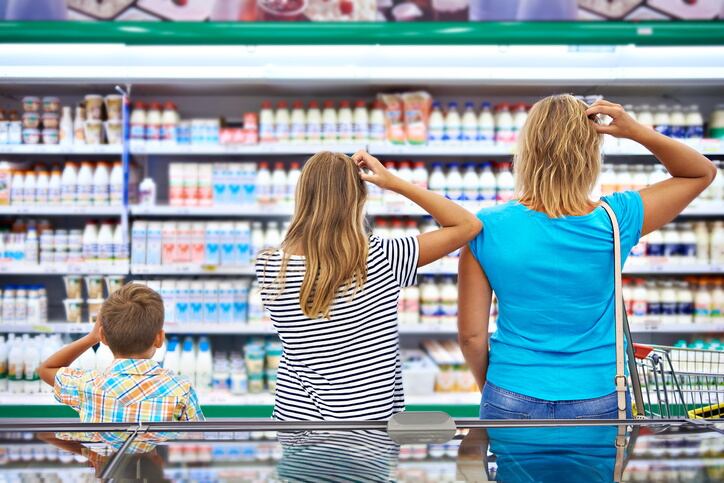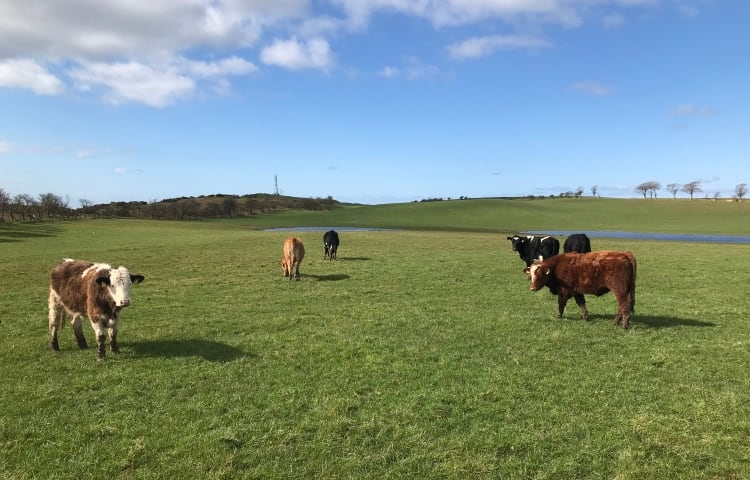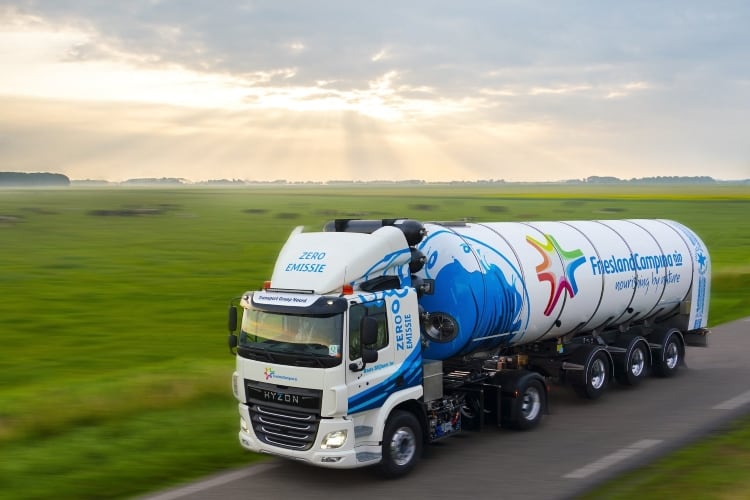A significant 65% of consumers want food and nutrition brands to do more to protect our planet, data from FMCG Gurus shows. And they’re not wrong – there’s no denying that our industry has a critical role in tackling some of the global challenges that stand between us and a healthy, sustainable future.
What’s more, despite the growing demand for healthy, convenient products, it’s often these very products that consumers want to see at the forefront of change. In fact, 28% think that drinks manufacturers are the most responsible industry for protecting the environment, while 25% think it’s pre-packaged food manufacturers, Mintel suggests.
In 2022, there’s a clear need for brands to showcase their sustainability credentials – including those leveraging healthy dairy ingredients, as agricultural industries face increasing public scrutiny.
But in today’s climate, scepticism and fears of greenwashing are at an all-time-high. And as the threat of reaching the 2◦C global warming threshold seems more and more real, consumers want clear cut evidence. Many companies rise to the challenge by including sustainability positionings on their products. But with 55% of consumers telling researchers at Innova that they don’t know what environmental labels to look for, is it enough?
Here are four things brands must do to level up their sustainability credentials, stand out on supermarket shelves, and overcome challenges of appealing to cynical shoppers.
1: Bring in a trusted partner
Ethical standards differ depending on the industry, and consumers don’t always know what different types of sustainability claims mean. By collaborating with specialised sustainability organisations, brands can benefit from more in-depth guidance on what they can claim on-pack, as well as relying on the credibility of an expert third party. The impact of this kind of endorsement can be staggering – research from Compare Ethics suggests that 83% of consumers are more likely to trust a product’s sustainability claim if it had been verified by a third party.
ClimatePartner is one such organisation that’s leading the way in helping brands make a real sustainability impact. Earlier this year, we partnered with ClimatePartner to bring our first ever carbon-neutral infant formula base powder to life. Having a third party partner helped us accurately measure the carbon footprint of the powder using extensive data from our member farms and factories, set a CO2 reduction target for the product, and find nature-based carbon off-set projects – like re-forestation programmes – that allowed us to neutralise the product’s impact.
Putting this plan into action, we will lower our carbon emissions on farm by 20% between 2019 and 2025. For customers, this means that not only can a minimum of 85% of their final infant milk formula be carbon neutral, but they can communicate to consumers that they are supporting carbon reduction projects. Demonstrating real-world impact helps reassure consumers that they can trust these claims.
2: Measure and measure again
Easy-to-understand, up-to-date, and accurate data is also essential in effectively demonstrating how your product’s sustainability creds stack up. In fact, research by Mintel suggests that consumers increasingly want to see companies’ progress against ethical initiatives. Quantifying the impact of your brand’s ethical efforts not only helps persuade consumers of the progress you’re making – which can influence purchasing decisions – it also ensures companies remain accountable for their actions.
So how do we achieve this? New technologies can enable improvements across your supply chain and help you get a more connected view across operations and stages of production. At FrieslandCampina Ingredients, we measure everything – from water and energy consumption at the factory, to the impact of nature at a farm level, using our innovative Biodiversity Monitor. These insights are especially important as they don’t just allow us to quantify and communicate improvements, but farmers to get detailed and personalised recommendations. There is, of course, scope for further standardisation of measuring improvements across the dairy and nutrition industry so that consumers better understand what reductions mean in real terms, but quantifying improvements is a key first step to educating consumers on how a product can help them make more sustainable choices.
3: Be clear on the cost of sustainability
Price is still a key purchasing driver for consumers, but it’s not the only one. More and more, other factors are coming into play. Today’s consumer needs are complex, and issues of health, ethics and experience are fast becoming top drivers behind any decision making.
We all know that investing in new, innovative, and more sustainable practices isn’t cheap, and there are long-standing concerns about the impact of passing the price of these investments onto consumers. But with 74% of global consumers concerned about the environment and two thirds wanting brands to do more to protect it, according to FMCG Gurus, sustainability is becoming a main purchasing driver. In fact, a recent study from Simon-Kucher & Partners found that one third of consumers are willing to pay a premium for sustainable products, with UK consumers open to paying average of 25% more for greener alternatives to their current purchases. So not only is being more sustainable the right thing to do – it doesn’t have to impact a company’s bottom line.
Communicating a product’s ‘true cost’, including explaining where costs are coming from, is one way to set your brand out from the others as a more sustainable, ethical option. It’s something we also encourage our customers to do – brands using our carbon neutral base powder can benefit from communicating that their funds are directly going to carbon reduction and compensation projects. What’s more, as consumers become more planet-aware, expectations for affordable sustainable products will only continue to grow – so now is the prime time to invest and transform business and purchasing models.
4: Open and honest communication
Scepticism can only be tackled with one thing – honesty. So not only do brands need to work harder to deliver reliable information, they also need to make it easier to trust. Part of this is about providing timely, accurate information. To do this, companies must understand their supply chain, from farm to factory and beyond. But in 2022, sustainability comms must go beyond simply reporting what is happening.
As consumers become more critical than ever, they’re increasingly sceptical of brands that only report on the good. For all the talk around transparency, this also means being open and honest about the not-so-good and reporting honestly on what still needs to be done. This includes being candid about what you measure already and what you don’t yet. By providing information on what steps you’re taking to make improvements, consumers are more likely to trust your brand – in fact, 71% would even pay a premium for products that provide full transparency, IMB Research Insights reveals.
It’s an approach we’re taking at FrieslandCampina – we just launched our Climate Plan which details the goals we’ve set for 2030, and the steps we’re taking to get there, across four scopes of work. We’ve already made progress against the first and second scopes, which cover production and transport, by reducing greenhouse gas emissions by 28%, including a 12.5% reduction across our member farms, through energy saving measures – but we know there’s more to be done. So, we’ve set ambitious targets for the third and fourth scopes, including a 33% reduction in greenhouse gas emissions on our member farms compared to 2015. We have a journey ahead of us to achieve this, but we know consumers expect brands to be open and honest about their activity – and so transparency is no longer an option, it’s an imperative.
Navigating the world of sustainability claims can be complex – both for brands and consumers. But one thing is clear: simple, transparent, and honest communication about real and tangible efforts are necessary to win over the doubters. Perhaps the most important step in the process is aligning with the right partners to ensure that claims are verifiable, as the brands that thrive in this era of increased scepticism will be those that understand their full impact – and communicate about it honestly, with more than just a logo or vague claim. By acting now, companies are not only helping forge a brighter future for more sustainable nutrition but also seizing the opportunities to exceed consumer expectations and stay ahead of the competition.




